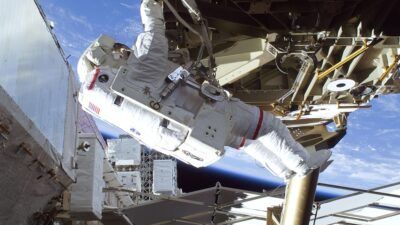In the modern age, satellites orbiting our planet are revolutionizing the way we understand and address climate change. These technological marvels are crucial tools in Earth observation, providing invaluable data and insights that are shaping climate research, policy, and action. As scientists grapple with the implications of a changing climate, the role of satellite technology has become increasingly vital.
The Power of Satellites in Climate Research
Satellites equipped with advanced sensors collect a myriad of data related to the Earth’s physical and biological systems. From measuring atmospheric gases to monitoring land use changes, these observations are essential for creating a comprehensive picture of our planet’s climate.
1. Comprehensive Data Collection
Satellites are capable of observing large areas of Earth with precision and detail. Unlike ground-based measurements, which can only cover limited regions, satellites can scan the entire globe consistently and repeatedly. This capability enables scientists to collect data on temperature, precipitation, sea level rise, and changes in land cover over time, contributing to a more complete understanding of climate trends.
2. Long-Term Monitoring
Climate change is a slow and often gradual process. Satellites provide long-term datasets that allow researchers to identify trends and patterns over decades. For instance, NASA’s Moderate Resolution Imaging Spectroradiometer (MODIS) has been capturing data since 2000, allowing for an analysis of changes in vegetation and land use patterns linked to climate change.
3. Global Perspective
Satellites offer a global perspective essential for understanding climate phenomena that transcend borders. Climate change is a worldwide issue; events such as hurricanes, droughts, and floods affect multiple nations. Satellite data helps researchers analyze these events in a global context, enabling better forecasting and management strategies.
Key Contributions of Satellite Technology
Satellites have made significant contributions across various aspects of climate research:
1. Monitoring Greenhouse Gases
Satellites like the European Space Agency’s Sentinel-5P have made strides in monitoring gases such as carbon dioxide (CO2) and methane (CH4), two major greenhouse gases. By providing detailed information about greenhouse gas concentrations in the atmosphere, these satellites aid scientists in understanding sources and sinks of emissions, as well as tracking their changes over time.
2. Assessing Climate Models
Satellite data is integral to validating and improving climate models. By comparing satellite observations with model predictions, researchers can refine their understanding of climate systems, making future predictions more accurate and reliable.
3. Disaster Response and Resilience
During natural disasters exacerbated by climate change, satellites play a key role in response efforts. They provide real-time data on weather patterns, flood extents, and damage assessment, enabling quicker and more effective responses to mitigate impact.
4. Biodiversity Tracking
Changes in climate have significant effects on ecosystems and biodiversity. Satellite imagery helps scientists monitor habitat changes, species distribution, and the health of ecosystems globally. This information is vital for conservation efforts and understanding the broader impacts of climate change on terrestrial and marine life.
Challenges and Future Directions
Despite their many advantages, satellite observations also face challenges. Data access and integration can be complex, and the proliferation of satellite datasets can lead to confusion without proper analysis tools. Furthermore, while satellites provide extensive data, they must be complemented by ground-based observations to validate findings and fully understand localized impacts.
The future of climate research is poised to benefit from ongoing advancements in satellite technology. Innovations in sensor capabilities, data processing techniques, and satellite platforms will continue to enhance the quality and scope of Earth observations. Efforts like NASA’s Earth Observing System and the European Union’s Copernicus program promise to deliver an unprecedented wealth of data, driving further research and actionable insights into our changing climate.
Conclusion
As satellites continue to orbit the Earth, they serve as our eyes in the sky, offering critical insights into our planet’s climate and environment. The data they provide not only enhances scientific understanding but also informs policy and action necessary to combat climate change. As we strive to create a more sustainable future, satellites will undeniably remain indispensable allies in the fight against one of the most pressing challenges of our time.

